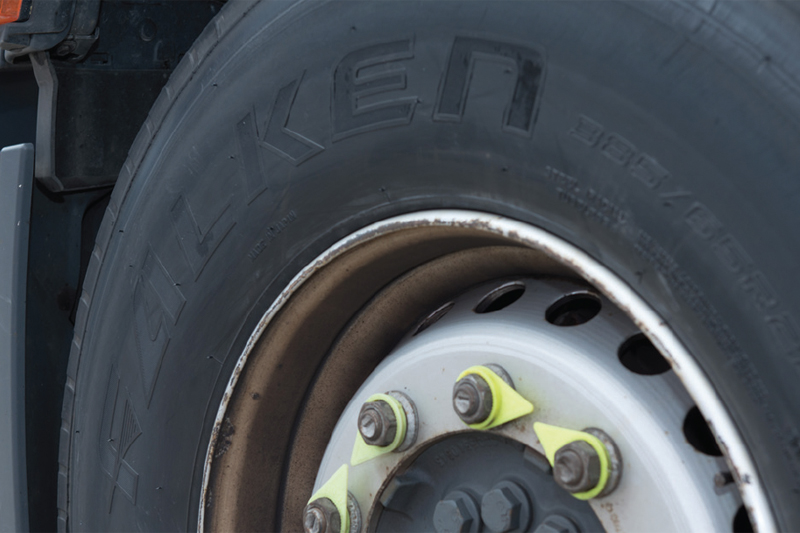
Robert Czarnecki, Supervisor, Product Planning at Falken Tyre, discusses why operators need to consider the fine balance of performance, durability, fuel efficiency, and overall cost effectiveness when matching the right tyre with the application.
Making the right tyre choice has always been a complicated business, and if tyre management is misjudged, it’s a choice that could continuously cost a workshop money. Correct tyre selection is crucial for safety, stability, and durability and there are a number of ways they can affect operator costs.
Mounting in the wrong position for its designation may lead to higher wear rates and reducing the tyre’s lifespan, or could reduce stability. Winter and summer patterns have fundamental compound differences that could lead to extra fuel consumption, as well as reduced braking performance if not used correctly. Operators should work with their tyre supplier to get the best pattern for the vocation, time of year and position on the vehicle.
Drive tyres are designed with tread patterns that have large contact areas to ensure optimal traction and stability, as well as meet load capacity requirements. For example, the recently launched Falken BI856 is the latest-generation drive axle tyre that is designed to deliver excellent traction in any weather condition. Its hexagon shaped tread blocks help improve block rigidity and stability.
Conversely, steer tyre treads are more closely designed to convey the applied steering thrust for optimal handling and wear. For these sorts of applications, wide and ridged shoulders help to provide excellent road stability, handling and even wear, all of which is essential. Falken has a number of tyres suited to these characteristics, such as the RI151.
The final application, trailer tyres, are designed to optimise stability and wear, whilst performing under a variety of loads. Whilst the tread pattern and construction differ for each application, some steer tyres are suitable for trailers, which provides a level of flexibility for operators, such as the Falken RI128.

Ensuring your fleet runs the correct tyres for the season is a key factor on economy as well as safety. Winter tyres have a much softer compound compared to summer tyres, so will be less effective at high temperatures (above 10-15°C), which could lead to much longer braking distances as well as higher fuel consumption.
But, in wet conditions, a winter tyre will still perform grip-wise in summer due to its softer compound. As for the summer tyre, the compound will become harder/stiffer and with a lack of braking performance and wet grip in cooler periods, which is accompanied by a detrimental effect on wear consistency.
The tyre’s compound can make all the difference and operators should consider what’s actually inside. Through pioneering research into the molecular structure of tyre materials using particle accelerators and advanced simulation computers, Falken’s parent company Sumitomo Rubber Industries (SRI) has succeeded in simulating the molecular structure of rubber compounds used for tyres at nano level to improve wear and consumption.

For example, it has analysed how and where superfluous heat is generated in the tyre, which typically results in loss of energy and increases rolling resistance, which in turn is responsible for fuel consumption.
It’s clear that, although selecting the right tyres might often prove complicated, it reaps enormous benefits in the long run. From optimised braking and wet performance, to wear and durability, as well as fuel consumption, this all has a positive impact on safety and the bottom line.
Workshop fitters understand that truck tyres need to be robust and resilient to damage, but this typically leads to sidewall stiffness that makes mounting a hard and physical process. However, the fitters at Barry & Wilkinson Tyre & Exhaust in Winsford, part of the Protyre network, have found fitting Falken’s rubber a pain-free procedure.
“The Falken tyres are so easy to fit, you could almost put them on with your hands. It makes a huge difference to the process, which is generally still manual,” says Dave Radford, Truck Manager at Barry & Wilkinson Tyre & Exhaust. “A truck tyre can weigh around 30kg; it can be a very physically demanding job getting them on and off. And it’s not just energy it saves, but time too.”
He continues: “The Falken tyres are quicker to fit as a result. We’re saving at least five seconds per tyre when simply mounting and fitting. Additionally, as the tyre sits and seals a lot quicker, that can potentially save around another 30 seconds per tyre as opposed to needing to get the beading plate out and blow that up. It may not sound like much, but it adds up.”








